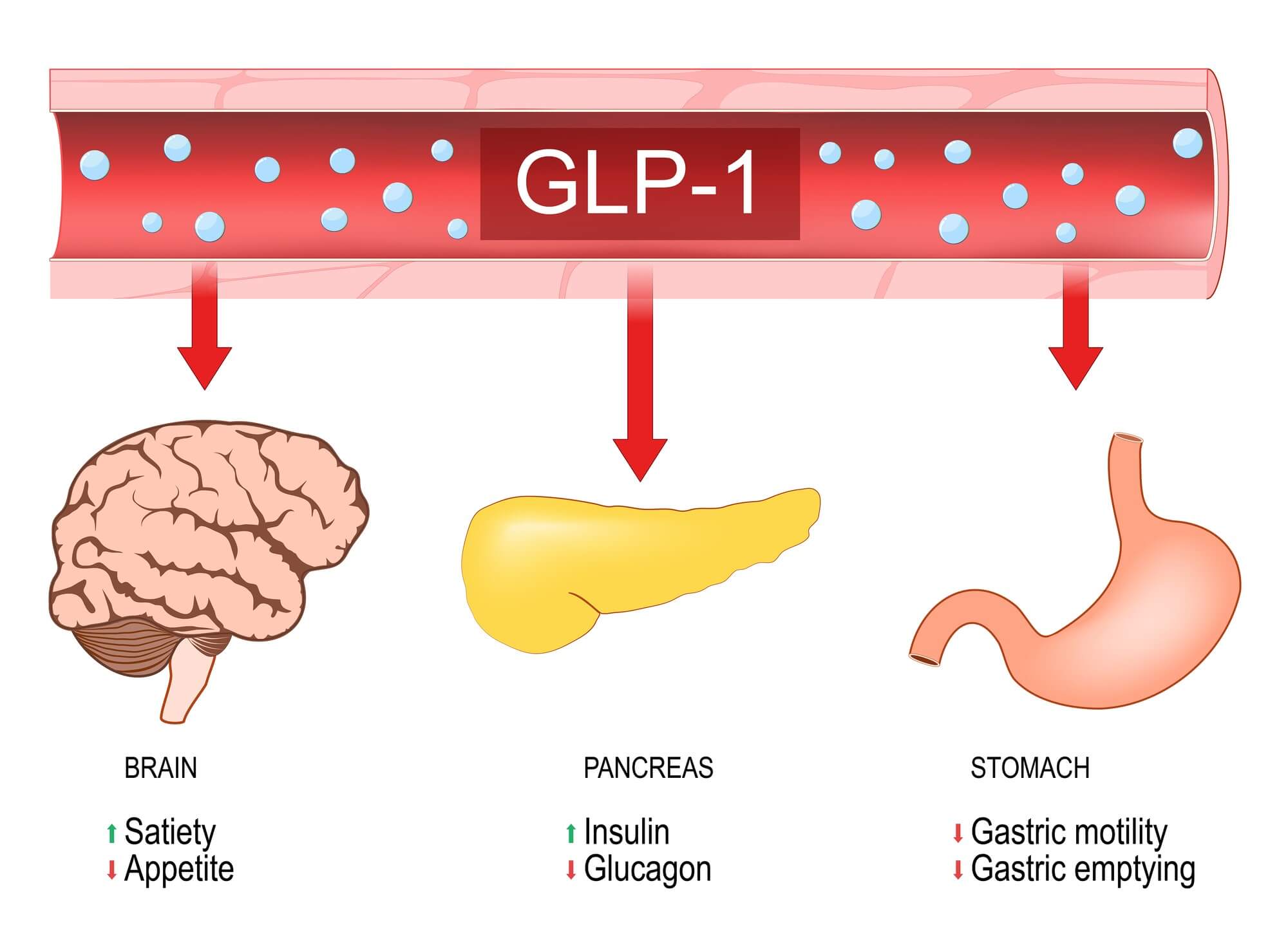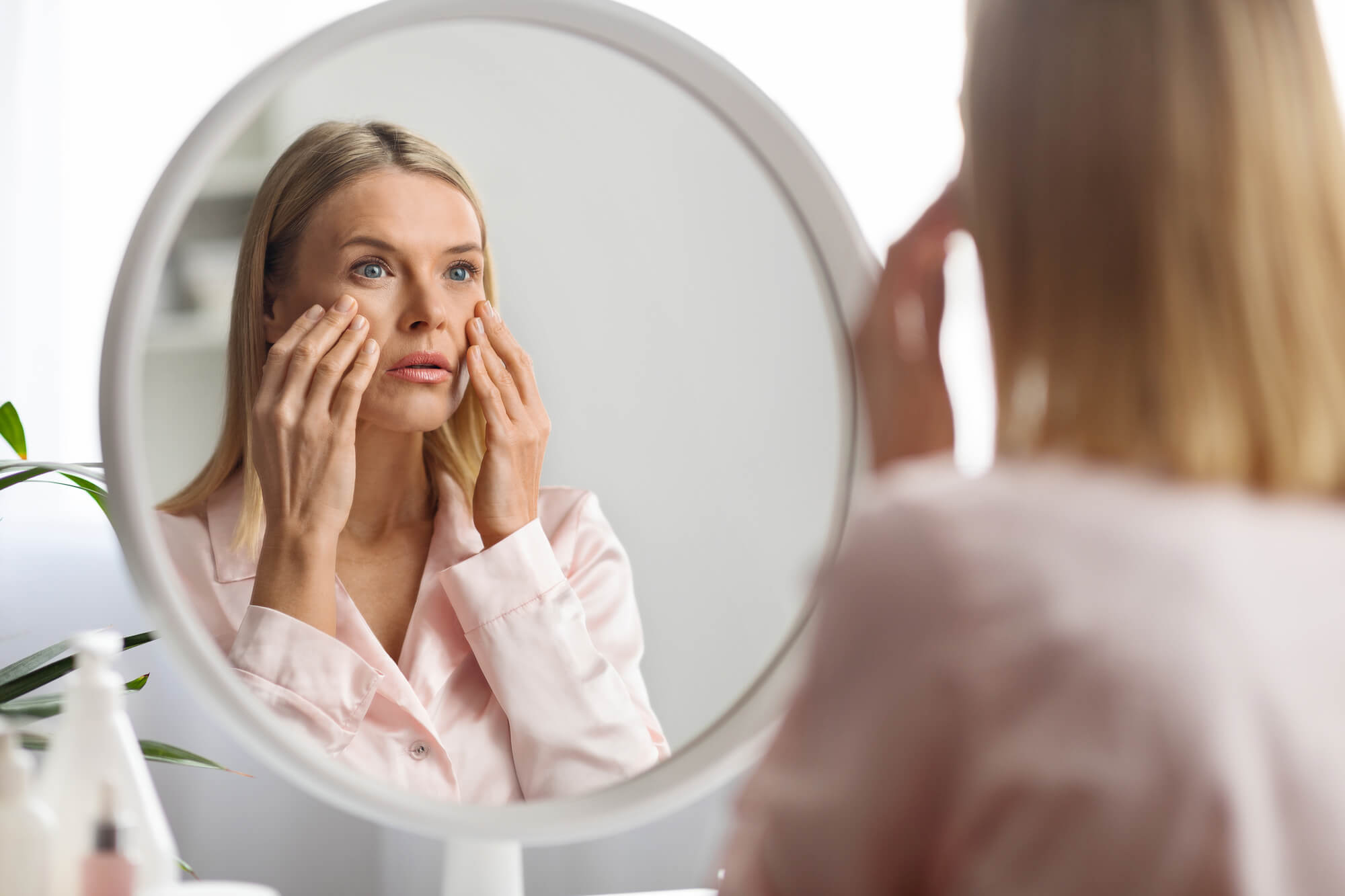
Ozempic is a prescription medication recently gaining popularity as a weight loss medication helping people lose weight and excess fat. Yet it’s been noted that taking Ozempic may be associated with some undesired side effects, namely facial fat loss, hollow appearance associated with facial volume loss, and saggy or loose facial skin. To avoid these undesired effects of Ozempic, individuals may consider a variety of prevention strategies ranging from lifestyle changes to various surgical and non-surgical aesthetic treatments.
Below, we explore how Ozempic works, why it causes the so-called “Ozempic face,” and how to prevent this pesky side effect.
What is Ozempic?
Ozempic is the brand name for semaglutide, a medication primarily used to treat type 2 diabetes. It belongs to the class of drugs known as glucagon-like peptide-1 (GLP-1) receptor agonists. Ozempic works by mimicking the effects of the natural GLP-1 hormone, which helps regulate blood sugar levels.

This injectable medication is typically administered once a week, providing a sustained release of semaglutide. It stimulates insulin secretion and inhibits glucagon release, both of which contribute to better blood glucose control.
What is GLP-1?
Glucagon-like peptide-1 is a hormone crucial in regulating blood sugar levels and is part of the incretin system. It’s primarily secreted from the intestines in response to food intake. GLP-1 serves as a key player in glucose metabolism, stimulating insulin release from the pancreas, which helps lower blood sugar levels. Additionally, GLP-1 inhibits glucagon secretion, preventing excessive glucose production by the liver.
Beyond its role in glucose control, GLP-1 has gained significant attention in the context of weight management. As a GLP-1 receptor agonist, Ozempic leverages the properties of this hormone to induce a feeling of fullness, reduce food intake, and slow gastric emptying.

By mimicking the effects of natural GLP-1, these medications contribute not only to improved blood glucose control in diabetes but also to weight loss in individuals with or without diabetes.
Ozempic for weight loss
While it was originally developed as a treatment for type 2 diabetes, Ozempic has gained attention for its potential in helping with losing weight. Studies have indicated that Ozempic can influence weight reduction as a secondary effect in people with or without diabetes.
Clinical trials evaluating Ozempic’s weight loss effects have shown promising results, with participants experiencing significant reductions in body weight. Consequently, the U.S. Food and Drug Administration (FDA) has approved a lower dose of Ozempic specifically for chronic weight management in individuals with a body mass index (BMI) of 27 kg/m² or greater, who also have at least one weight-related condition.

As with any medication, potential side effects and individual variations in response should be considered, and consultation with a healthcare professional is essential before using Ozempic for weight loss.
What is Ozempic face?
“Ozempic face” refers to facial changes experienced by individuals who significantly lose weight, often associated with the use of Ozempic. This phenomenon involves a gaunt facial appearance caused by fat loss, sagging skin, and the appearance of aging, particularly noticeable in the lower jaw, jowls, and around the eyes, temples, jawline, and mouth. There is also “Ozempic body,” or saggy crepey excess skin in the arms and rear end. These changes are attributed to the rapid and substantial weight loss associated with Ozempic use. Notably, they are likely a downstream effect of the weight reduction rather than a direct consequence of Ozempic itself.

Medical professionals emphasize that factors such as the natural aging process, genetics, menopause, and the speed of weight loss contribute to these facial changes. The recommended weight loss rate with Ozempic is 1 to 2 pounds per week, and individuals losing larger amounts of weight may experience more pronounced facial alterations.
Preventing and managing Ozempic face
Preventing Ozempic face, as well as Ozempic body, involves various approaches, both medical and lifestyle-oriented. Generally, prevention is thought to be a better strategy rather than aiming to fix sagging after the fact.
Reducing dosage or changing medications
Those concerned about Ozempic face may consider speaking to their healthcare providers about reducing the Ozempic dosage or exploring different medications that may have fewer aesthetic impacts.

Lifestyle modifications
Adopting a healthy lifestyle, including regular exercise and balanced nutrition, can contribute to overall well-being and mitigate potential aesthetic impacts on facial appearance. Maintaining hydration with one to two liters of water daily and ensuring a protein-rich diet supports skin health during weight loss.
Microneedling
Also known as “collagen induction therapy,” microneedling involves tiny needles that stimulate collagen production, improving skin elasticity. This procedure helps reduce signs of aging, including sagging and loose skin. By promoting collagen in targeted areas, microneedling can be a proactive measure to prevent the facial effects of rapid weight loss associated with Ozempic.
Dermal fillers
Facial fillers, injected into the skin, effectively smooth wrinkles and fine lines, restoring lost volume. While they offer a non-surgical option to counteract sagging and aging due to weight loss, it’s essential to note the associated cost. Individuals may consider dermatological fillers as a preventive measure to maintain facial fullness and elasticity during Ozempic-induced weight loss, with the treatment’s temporary nature requiring periodic reapplication for sustained results.
Sofwave™
Sofwave™ is an advanced, effective, FDA-cleared strategy for improving skin laxity, which can help prevent Ozempic face by addressing skin changes during rapid weight loss.

This non-invasive procedure precisely delivers ultrasound energy to the mid-dermis, rejuvenating collagen, elastin, and hyaluronic acid and enhancing overall skin appearance.
Sofwave™ is clinically proven, safe for all skin types, and offers quick treatment with minimal downtime. The groundbreaking SUPERB™ technology provides a proactive approach to counteracting sagging during Ozempic-induced weight loss, offering individuals an effective means to prevent undesired facial effects.
For more on Sofwave™ for Ozempic face, watch this video:
Fat transfer
The fat transfer procedure involves harvesting fat from one part of the body and injecting it into facial areas prone to sagging, providing a natural and long-lasting solution to restore volume. While the effectiveness of fat transfer in mitigating Ozempic-induced facial changes requires further exploration, it presents a potentially promising avenue for individuals seeking proactive measures to maintain facial fullness and minimize the signs of aging during the weight loss process.
FAQs fro Ozempic Face
How much weight can I lose on Ozempic in 3 months?
Weight loss on Ozempic in three months varies, but many users experience significant results. Individual responses differ based on factors like diet and exercise.
What is the downside of Ozempic?
Downsides of Ozempic may include gastrointestinal side effects such as nausea or diarrhea and in rare cases, more serious issues. Consult your healthcare provider for personalized information.
What does Ozempic do to your face?
Ozempic can lead to facial changes during rapid weight loss, often described as “Ozempic face,” involving a loss of facial fat and sagging.
What does Ozempic do to your stomach?
Ozempic may slow gastric emptying, potentially causing stomach-related side effects like nausea or discomfort. Consult your healthcare provider for personalized advice on managing these effects.

Conclusion
Ozempic’s dual role in diabetes management and weight loss brings forth a myriad of considerations, including the intriguing yet challenging phenomenon of “Ozempic face.” While the medication’s efficacy in promoting weight loss is evident, the potential unwanted aesthetic changes demand a proactive and informed approach. From medication adjustments to lifestyle modifications and innovative technologies like Sofwave™, individuals have an array of strategies to navigate the intricacies of Ozempic-induced weight loss while preserving facial aesthetics.
To learn more about how Sofwave™ can help you maintain a youthful, lifted appearance, contact us below.
References:
- "What to know about “Ozempic face”," Ami Patel PharmD, BCPS, Medical News Today, https://www.medicalnewstoday.com/articles/ozempic-face
- "What is 'Ozempic face'? Significant weight loss on the drug can change your face, doctors say,” Maura Hohman, Today, https://www.today.com/health/ozempic-face-rcna67737
- "‘Ozempic Face’: What It Is And How To Treat It," Amy Mackelden, Forbes, https://www.forbes.com/health/weight-loss/ozempic-face/
- "GLP-1 agonists: Diabetes drugs and weight loss," M. Regina Castro, M.D., Mayo Clinic https://www.mayoclinic.org/diseases-conditions/type-2-diabetes/expert-answers/byetta/faq-20057955
- "Fat Transfer," Cleveland Clinic medical professional, Cleveland Clinic, https://my.clevelandclinic.org/health/treatments/24027-fat-transfer
- "Microneedling," Cleveland Clinic medical professional, Cleveland Clinic, https://my.clevelandclinic.org/health/treatments/23113-microneedling
- "Dermal Fillers," Cleveland Clinic medical professional, Cleveland Clinic,, https://my.clevelandclinic.org/health/treatments/22667-dermal-fillers




